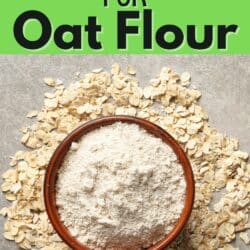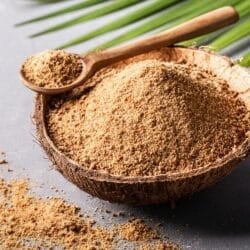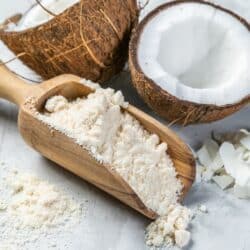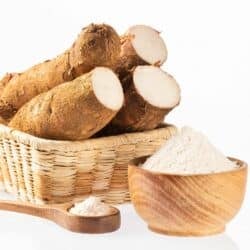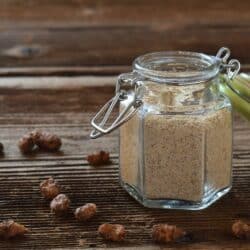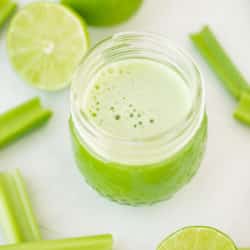9 Best Oat Flour Substitutes
Oat flour is made from finely-ground rolled oats. It can be used for gluten-free baking as it is an alternative to wheat flour. But what happens if a recipe calls for oat flour and you don’t have it on hand? Here are the best oat flour substitutes.
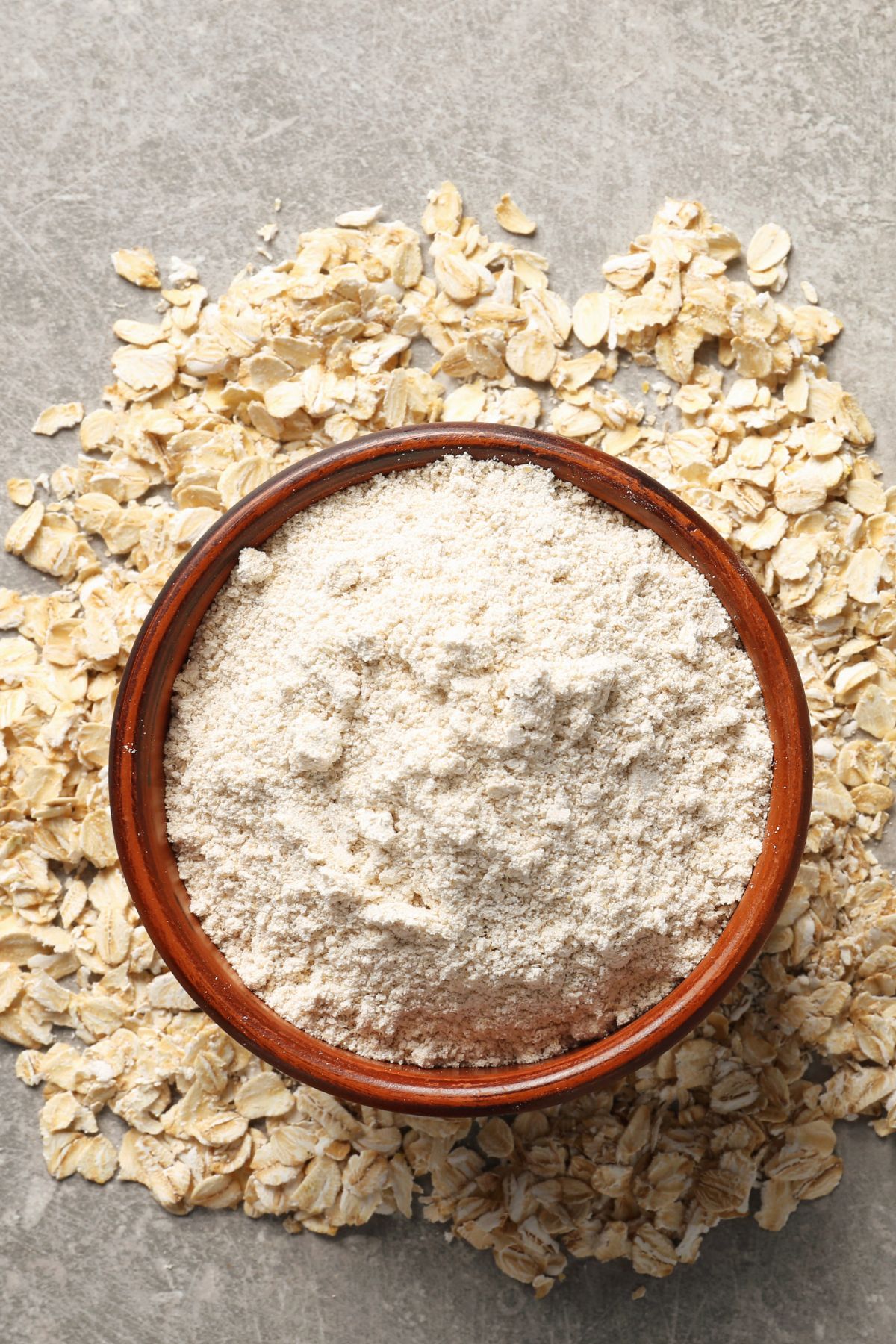
Overview of Oat Flour
Oat flour has a nutty flavor and a slightly coarse texture and is a healthy alternative to wheat flour, as it is high in fiber and protein.
If you use certified gluten-free oats to make your oat flour, you can use it in gluten-free baking or your favorite gluten-free recipes.
How it’s used
Oat flour can be used to make bread, muffins, pancakes, and other baked goods. It can also be used as a thickener in soups and sauces.
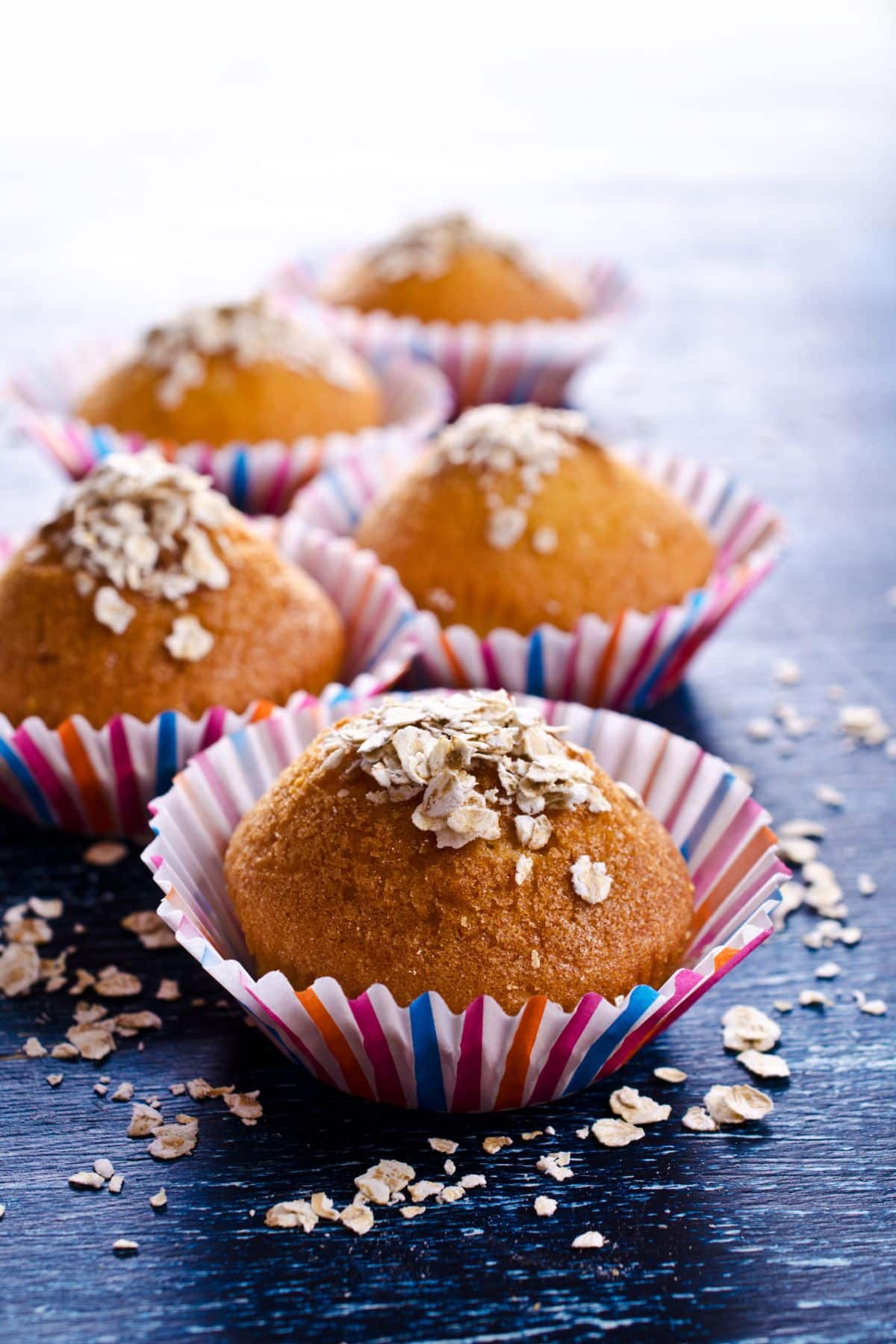
When baking with oat flour, it is important to add extra liquid to the recipe, as oat flour absorbs more moisture than wheat flour.
Oat flour can be found in most health food stores.
How it’s made
Oat flour is made by grinding whole oats into a fine powder.
You can purchase it or you can easily make it at home by blending rolled oats in a food processor or blender until they reach a flour-like consistency.
Best Oat Flour Substitutes
If you are making a recipe that calls for oat flour, but you don’t have it on hand, here are options you can use as an oat flour substitute.
Try looking for these options at grocery stores to keep on hand for your favorite recipes. A lot of these are great gluten-free alternatives and are a good option for recipes that call for regular flour or oat flour.
1. Rolled oats (you will need to grind them)
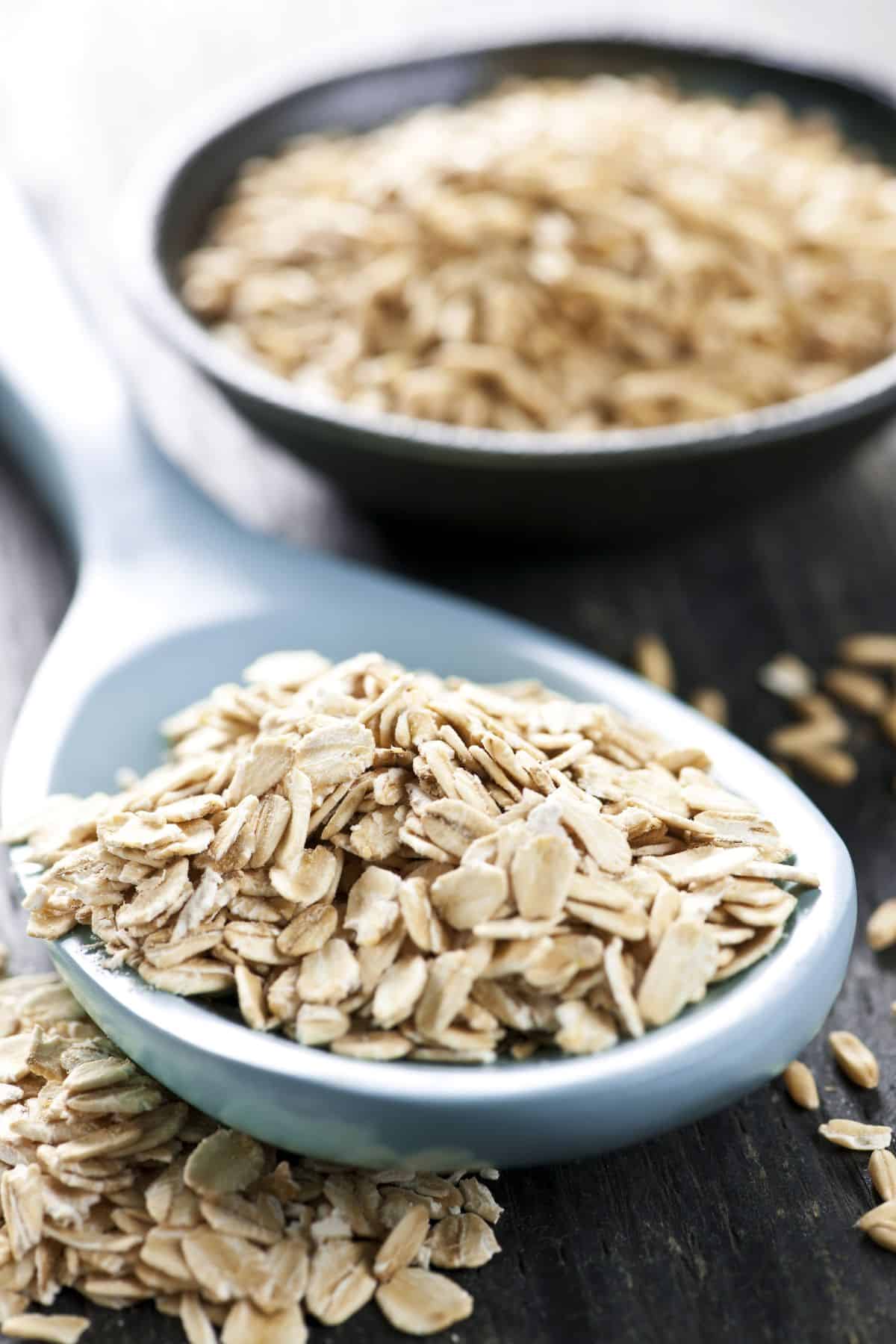
Grinding your own oats is the best way to make oat flour. Oats are an excellent source of fiber and protein, and they also contain vitamins and minerals such as iron and magnesium.
When you grind oats yourself, you can control the fineness of the grind, which can impact the cooking time and texture of the finished product. Homemade oat flour is made from whole grains and is one of the best substitutes for oat flour because it is oat flour!
Try to use rolled oats to make your own ground oats. Don’t use oat groats or steel-cut oats.
To substitute one cup of oat flour, use one cup of rolled oats.
2. All-purpose flour
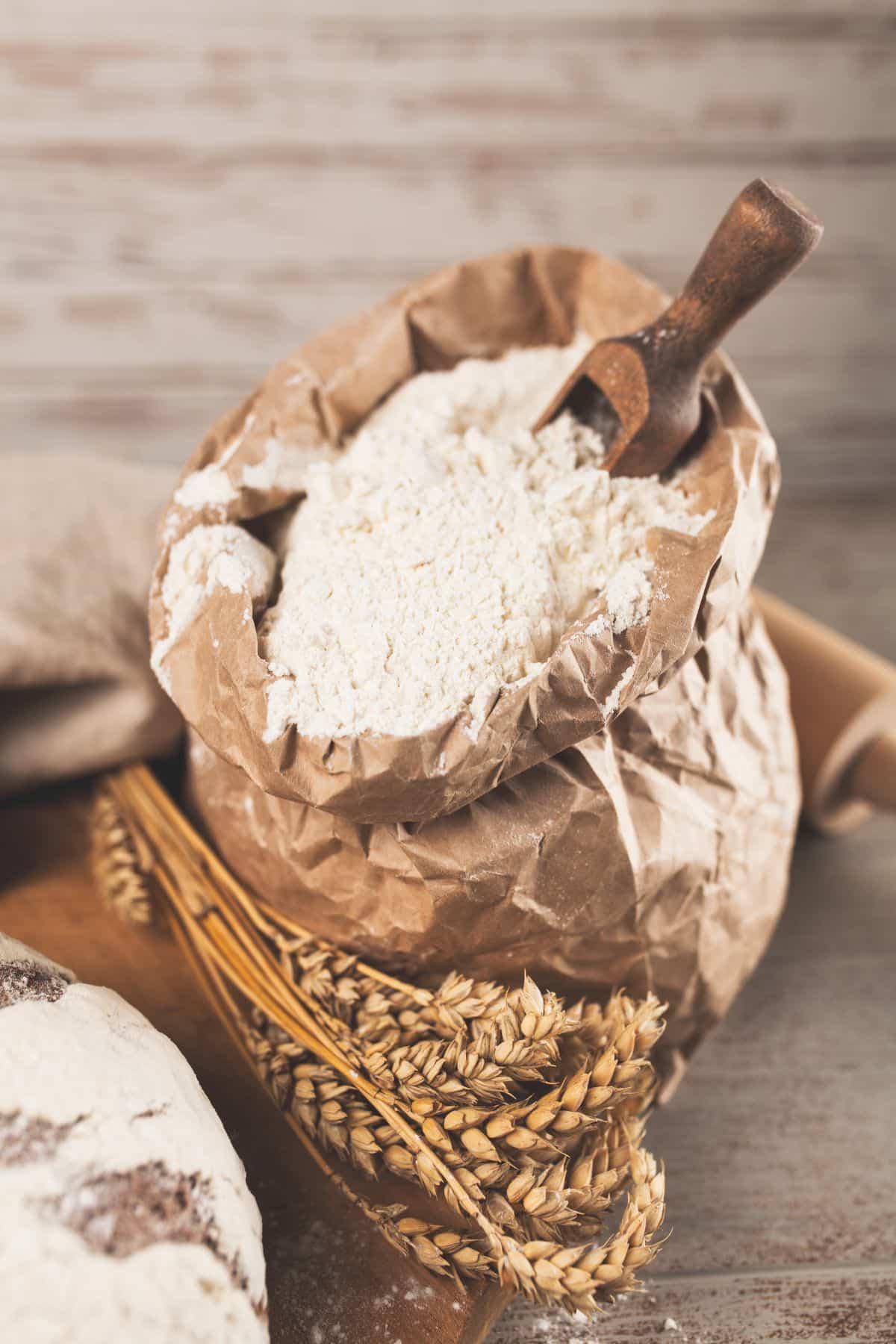
All-purpose flour is made from a blend of different wheats, which gives it a balanced protein content. It can be used for cakes, cookies, muffins, breads, and other baked goods.
All-purpose flour is also relatively low in starch, which can make it absorb more liquid when used in recipes that call for wet ingredients like milk or eggs. As a result, all-purpose flour is best suited for recipes that are not too wet or too dry.
Please note that while oat flour can be gluten-free, all-purpose whole wheat flour or regular flour is not gluten-free because it is made from wheat.
To substitute one cup of oat flour, use 3/4 cup of all-purpose flour.
3. Gluten-free baking flour
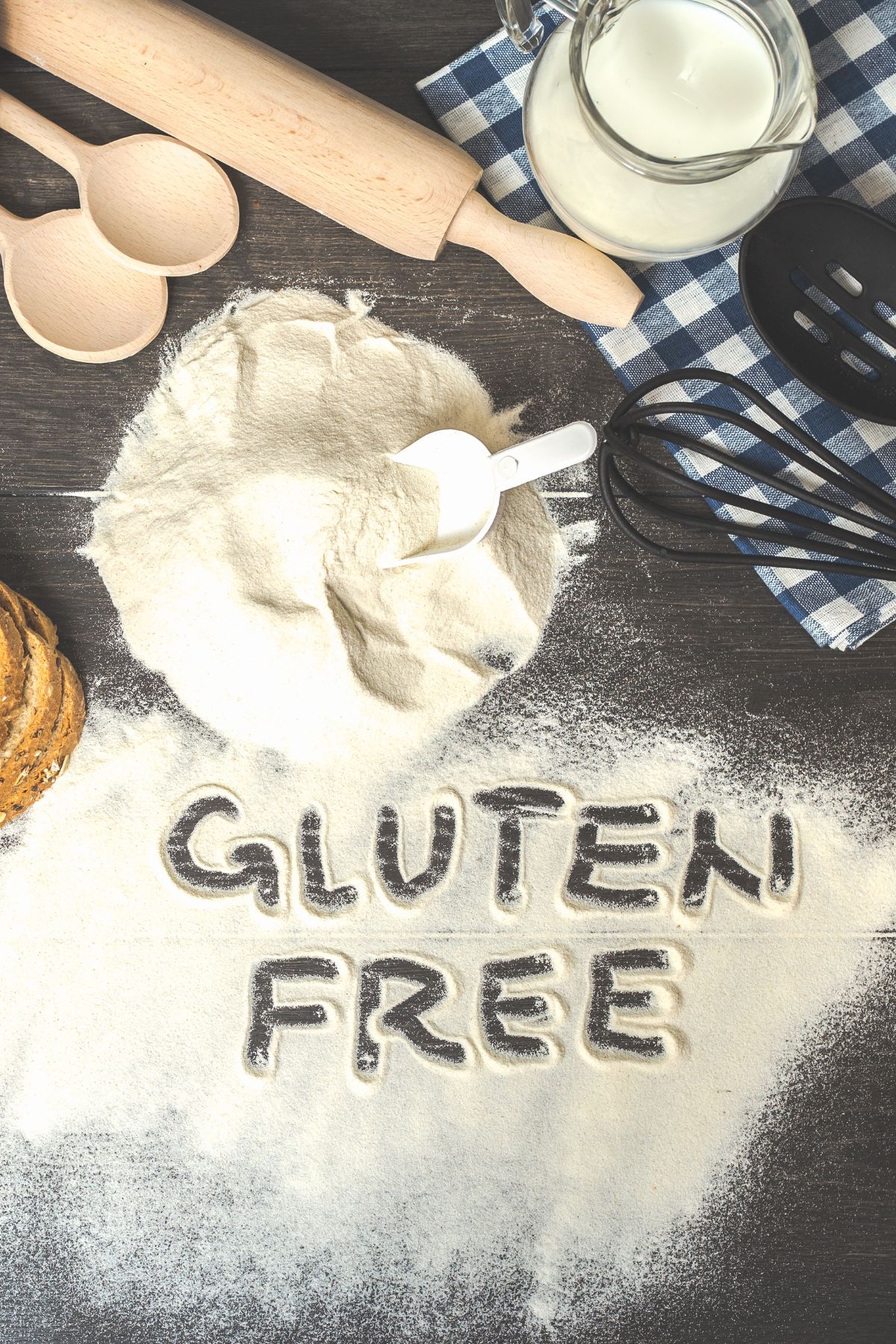
This type of flour is made from a variety of gluten-free grains. As a result, it can be used as a direct replacement for wheat flour or oat flour in many recipes.
Gluten-free baking flour is available in most supermarkets, and it’s a great way to make delicious baked goods that everyone can enjoy.
My favorite brand is Bob’s Red Mill Gluten-Free Baking Flour. This gluten-free flour blend subs one for one with white flour and is great for a gluten-free diet.
To substitute one cup of oat flour, use one cup of gluten-free baking flour.
4. Almond flour
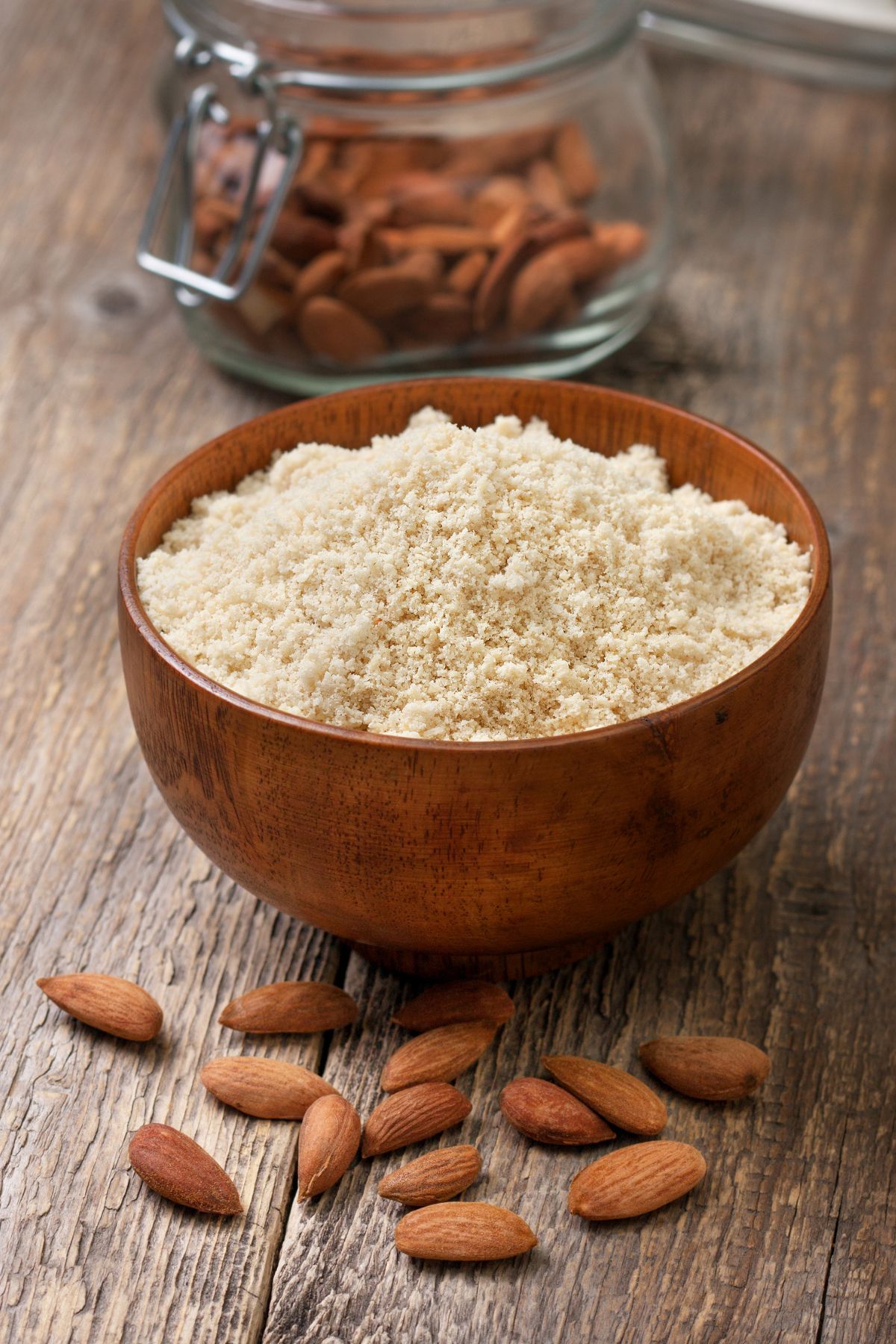
Made from finely ground almonds, almond flour has a moist texture and nutty flavor that enhances the taste of baked goods. In addition, almond flour is a good source of protein and fiber, making it a healthier alternative to other types of flour.
When baking with almond flour, it is important to remember that it can be more absorbent than other types of flour, so you may need to use less of it in your recipe. Start with a ¾ cup and adjust to taste and consistency.
To substitute one cup of oat flour, use 3/4 cup of almond flour.
5. Buckwheat flour
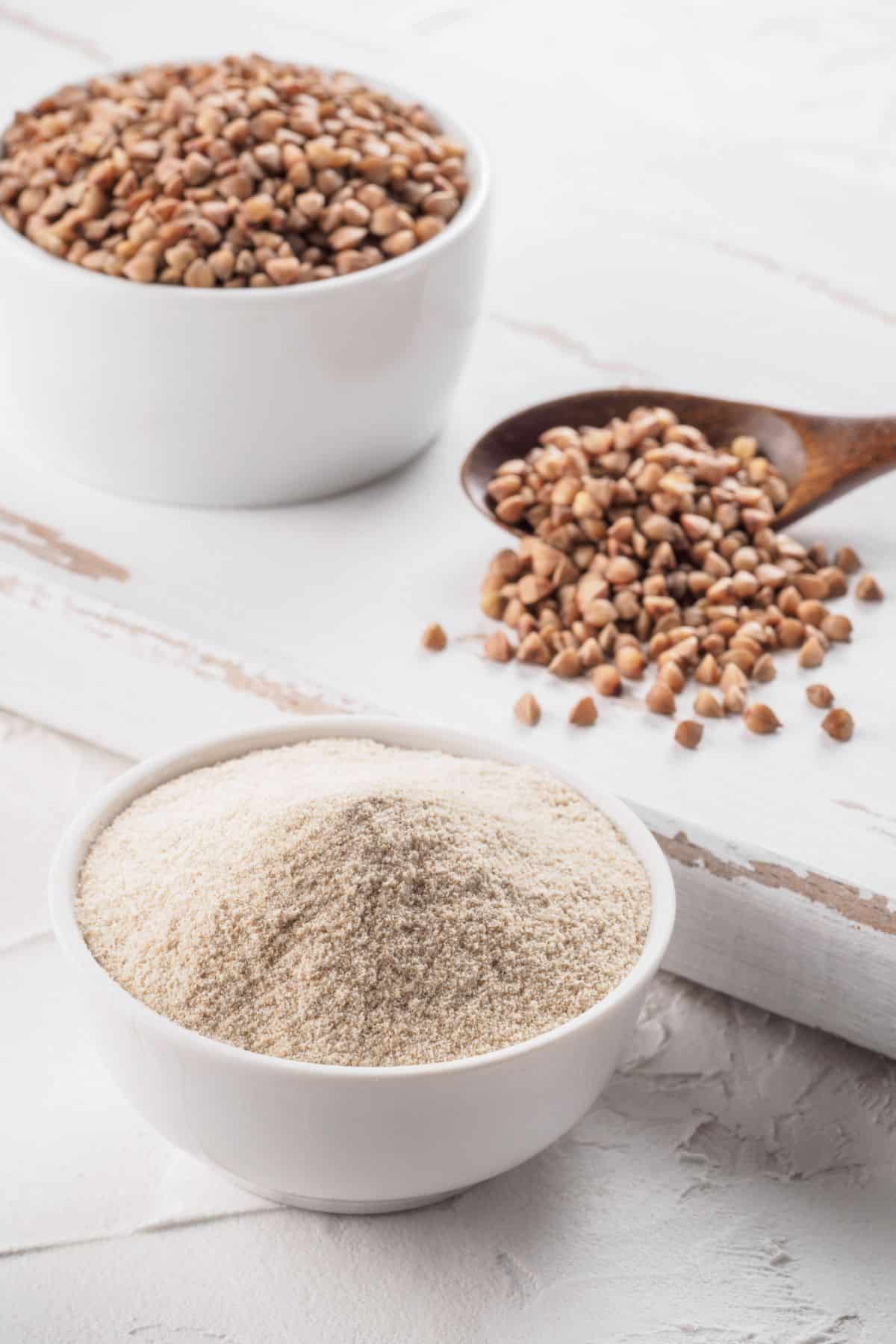
A small grain, buckwheat can be ground into a fine powder to make flour. Buckwheat flour is popular in many parts of the world and is naturally gluten-free.
It is used to make a variety of different foods, such as noodles, pancakes, and dumplings. Buckwheat flour is also a good source of protein and fiber. It is high in vitamins and minerals, and it has a nutty flavor. This flour can be found in most supermarkets.
To substitute one cup of oat flour, use one cup of buckwheat flour.
6. Rice flour
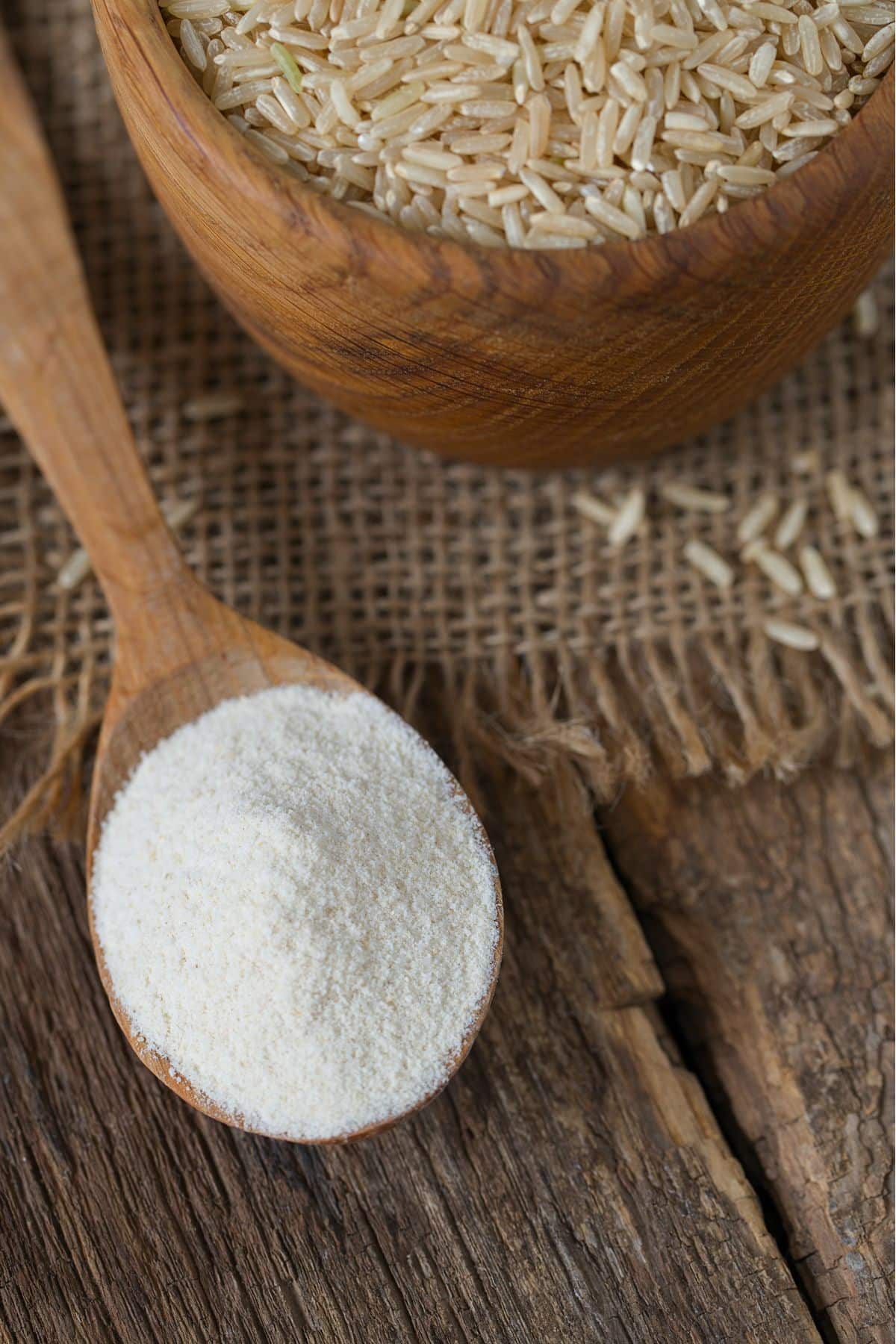
Rice flour is powdery flour made from finely milled rice. It’s gluten-free and becoming increasingly popular as an alternative to wheat flour for people with celiac disease or gluten sensitivity.
It’s high in resistant starch, which is a type of insoluble fiber that may have health benefits. Additionally, rice flour is a good source of iron and B vitamins.
To substitute one cup of oat flour, use one cup of rice flour. You can use white rice flour or brown rice flour.
7. Chickpea flour
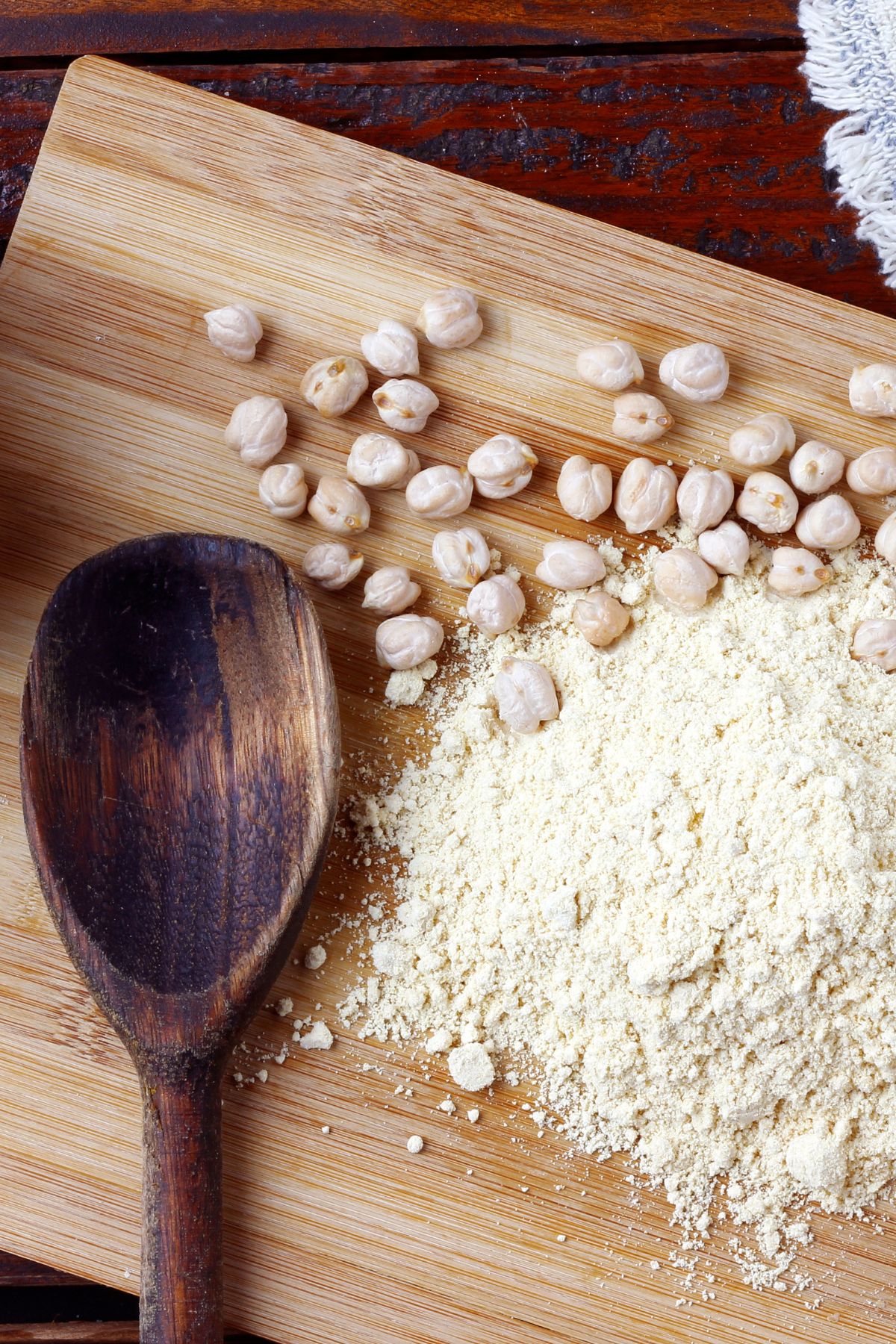
Made from high protein legumes, chickpea flour is high in protein and fiber. Chickpea flour can be used to make pancakes, breads, muffins, and even desserts. It is also a good choice for those who are looking for a gluten-free option.
When using chickpea flour, it is important to keep in mind that it has a strong flavor. As a result, it is best to use it in recipes that have other bold or savory flavors.
To substitute one cup of oat flour, use 3/4 cup of chickpea flour.
8. Tigernut flour
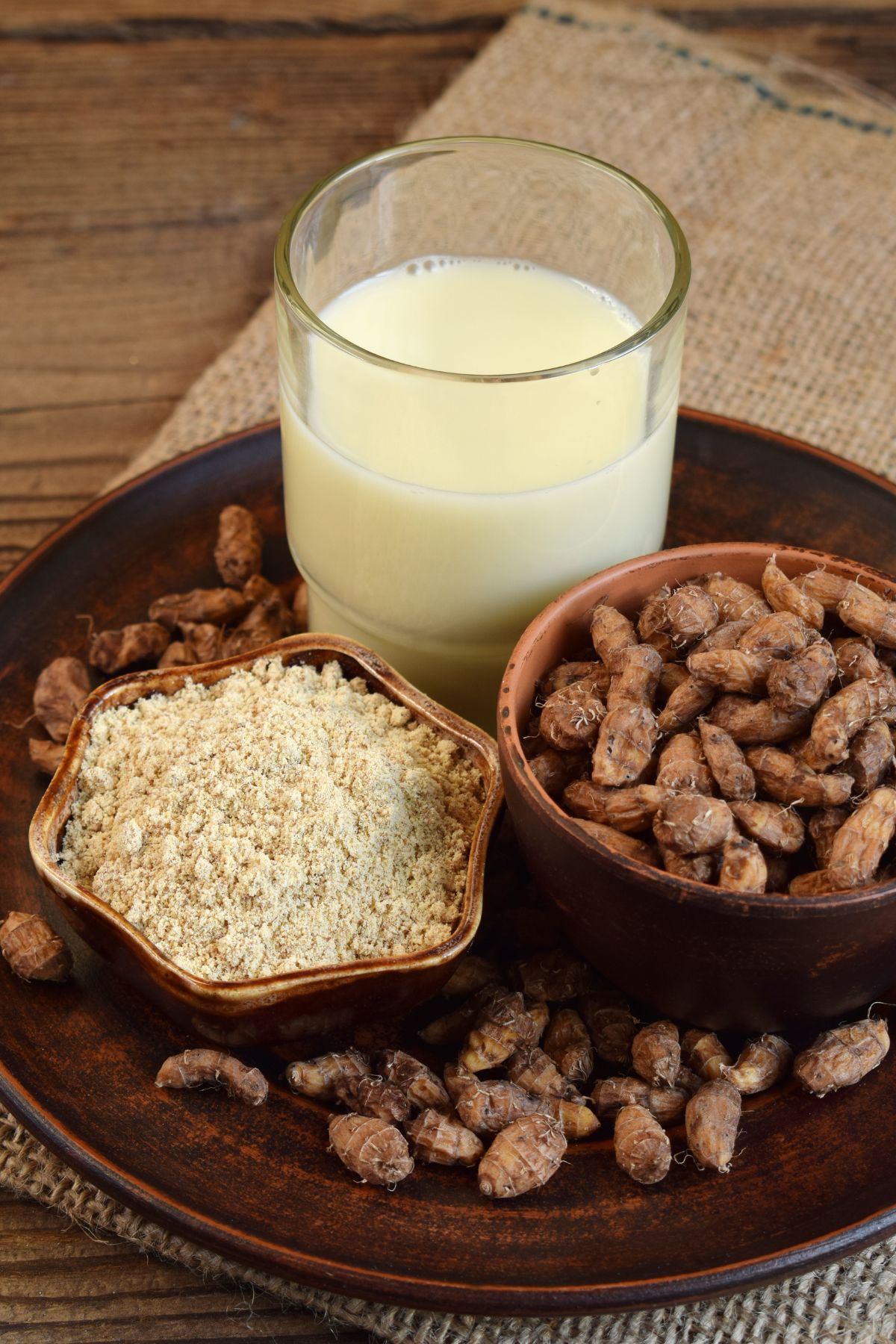
Tigernut flour is a gluten-free, grain-free flour made from ground tigernuts. Tigernuts are small, tubular root vegetables that are native to Africa and have been used in traditional African cuisine for centuries.
Tigernut flour has a nutty flavor and a slightly sticky texture, making it perfect for use in baked goods such as cakes, cookies, and breads. It is also a good source of dietary fiber and healthy fats. Tigernut flour can be purchased online or at health food stores. It should be stored in a cool, dry place.
To substitute one cup of oat flour, use one cup of tigernut flour.
9. Cassava flour
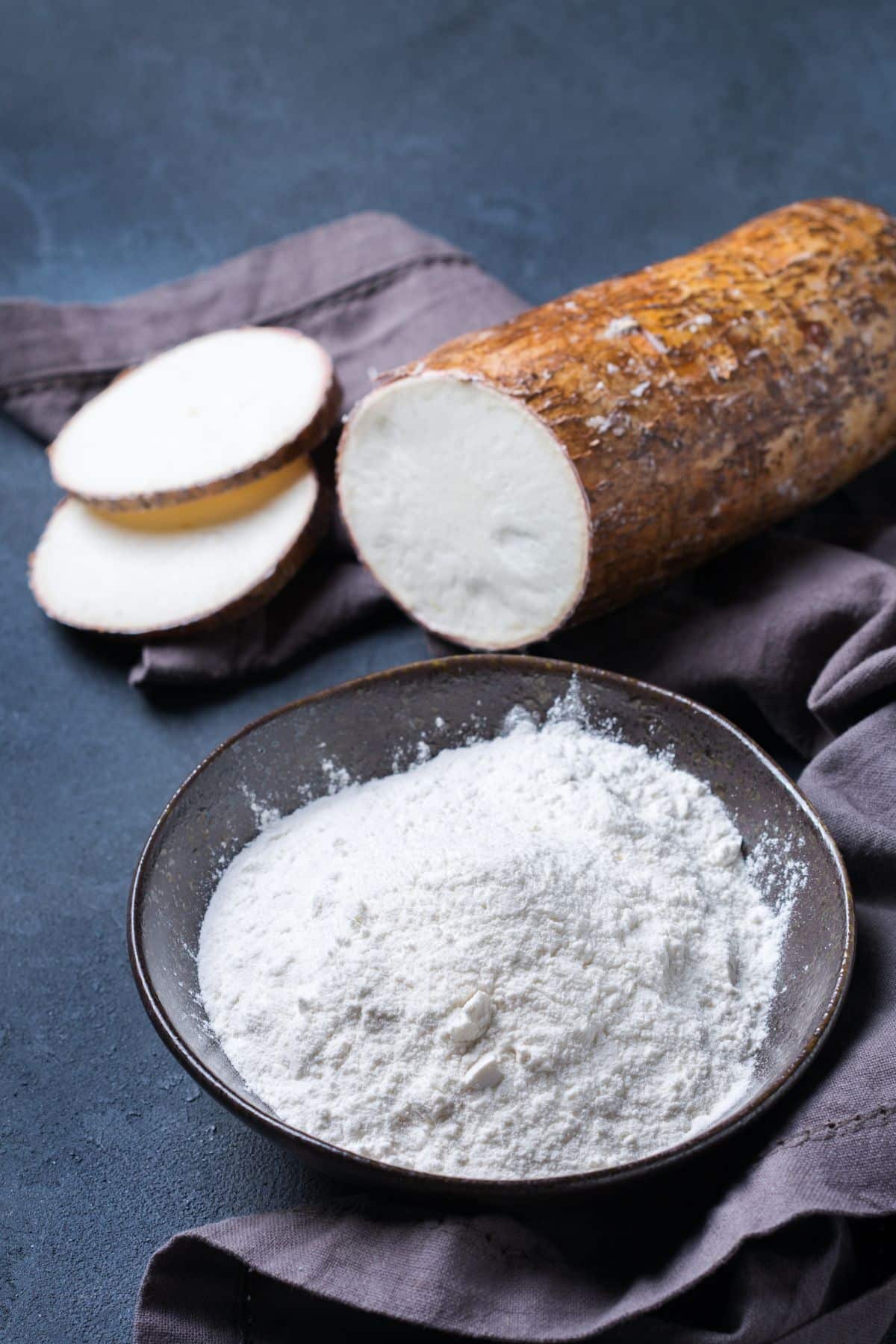
This versatile root flour is a gluten-free flour that can be used in a variety of recipes. Cassava flour has a slightly sweet taste and a grainy texture. It can be used to make breads, pancakes, cookies, and other baked goods.
Due to being naturally gluten free, cassava flour is an excellent option for people with celiac disease or gluten intolerance. When used in combination with other gluten-free flours, it can produce light, fluffy baked goods that are indistinguishable from their wheat-based counterparts.
To substitute one cup of oat flour, use one cup of cassava flour.
Pros and Cons
Here’s a chart summarizing various substitutes for oat flour, including the pros and cons of each alternative:
| Substitute | Pros | Cons |
|---|---|---|
| Rolled Oats | Fresh, can control the fineness, adds fiber and nutrients. | Requires grinding, may have a coarser texture. |
| All-purpose Flour | Widely available, good for various baking needs. | Contains gluten, not suitable for gluten-free recipes. |
| Gluten-free Baking Flour | Direct replacement, gluten-free. | Can vary in composition and behavior in recipes. |
| Almond Flour | Moist texture, nutty flavor, good source of protein. | More absorbent, may require recipe adjustments. |
| Buckwheat Flour | Gluten-free, nutty flavor, rich in nutrients. | Strong flavor may not be preferred in all recipes. |
| Rice Flour | Gluten-free, good for people with celiac disease. | High in starch, may result in a different texture. |
| Chickpea Flour | High in protein and fiber, gluten-free. | Strong flavor, best for bold or savory recipes. |
| Tigernut Flour | Gluten-free, nutty flavor, good source of fiber. | Less common, might be hard to find in local stores. |
| Cassava Flour | Gluten-free, versatile, good for baked goods. | Slightly sweet taste, grainy texture may affect final product. |
FAQs
Oats do not contain gluten. But oats can become contaminated with gluten during the growing or processing phase. As a result, it’s important to check the label of any oat-based product to make sure it is listed as gluten-free, and it wasn’t used in a plant with grains that contain gluten.
Yes, but you won’t need to process the quick cooking oats as long as old-fashioned oats because they are thinner.
It is harder to use coconut flour as a substitute because it absorbs so much more moisture than oat flour. It’s probably best to use another one of the options listed above.
More Articles About Substituting Ingredients
Don’t forget to join my newsletter list to get exclusive clean eating recipes and tips. The newsletter is 100% free with no spam; unsubscribe anytime.
About the Author: Carrie Forrest has a master’s degree in public health with a specialty in nutrition. She is a top wellness and food blogger with over 5 million annual visitors to her site. Carrie has an incredible story of recovery from chronic illness and is passionate about helping other women transform their health. Send Carrie a message through her contact form.


